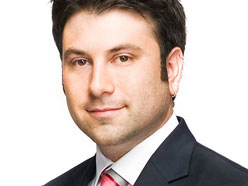
When it comes to financial planning, it’s natural to focus on growing clients’ work or pension incomes. But there’s another way to create wealth: keep money away from the government.
With new tax credits coming out every year, there are a lot of opportunities to save that hard-earned cash and even invest it back into an RRSP or a tax-free savings account.
While your clients’ accountants may be doing the number crunching, you should be talking to them about some of the new tax-savings measures they can tap into and also about what they should do with the dollars they don’t hand over to the CRA.
Income splitting
The most significant new tool in the tax arsenal is income splitting, says Carol Bezaire, senior vice-president of tax and estate planning at Mackenzie Financial.
Couples with children under the age of 18 will be able to shift $50,000 of income over to the lower-earning spouse. While the “transfer” reduces the higher earner’s income, it’s not actually added to the lower earner’s, so that person’s taxable income doesn’t rise, says Bezaire.
While this can be a boon to Canadians who make a lot of money, there’s a $2,000 limit to the savings. As well, single people with children can’t take advantage of this initiative.
Children’s Fitness Tax Credit
There’s good news for clients who have children under the age of 16 and have been taking advantage of the Children’s Fitness Tax Credit — the amount they can claim has gone up.
People can now claim $1,000 in child-related fitness fees instead of the usual $500. For anyone generating income, that $1,000 will reduce tax owing.
If people are in a low tax bracket, though, and can’t absorb the amount into their taxes, they’ll get that amount back in the form of a cheque, says Bezaire.
Still, the higher-income earner should claim the amount, she explains.
Pension splitting and medical expenses
Advisors with older clients shouldn’t forget about pension splitting. Someone who receives a defined benefit pension can allocate up to 50% of pension income to the lower-earning spouse.
That can be done at any age, says Bezaire; the client just has to be drawing a pension. As well, unlike the new income-splitting strategy, the money transferred to a spouse will increase that spouse’s taxable income.
Retirees also likely have a lot of medical expenses, such as prescriptions, dental work, hearing aids and more. Fortunately, they can claim those too.
There is a “deductable” of 3% of someone’s income, says Bezaire, so it’s always better to tally up the expenses and claim them on the lower earner’s return.
Invest those savings
These are just a few ways people can save tax, but there are many other ways too. Once the accountant is finished and the return is ready to go, the advisor should find out exactly how much the client has saved.
Most people don’t do this, says Bezaire, but those who do will know how much extra money they now have in their bank accounts. She suggests putting those savings onto non-deductible debt first. That’s credit card debt, but also mortgage debt.
People should consider investing more in their RRSP rather than taking that larger refund and putting it on their mortgage, she says.
Bezaire has also been directing people to put those savings in a TFSA, especially retirees who are withdrawing from a RRIF or people who don’t need the tax deduction right away.
“It’s an easy way to keep track of what you’ve saved,” she says, adding that people now have a total contribution limit of $36,500.
Whatever you decided to do, though, just make sure your clients take advantage of the myriad credits and deductions. The more money they can keep in their “pockets,” the better off they’ll be.